A leading eye doctor and optometry professor reveals what's often mistaken for pink eye—and the red flags that could indicate a more serious problem.
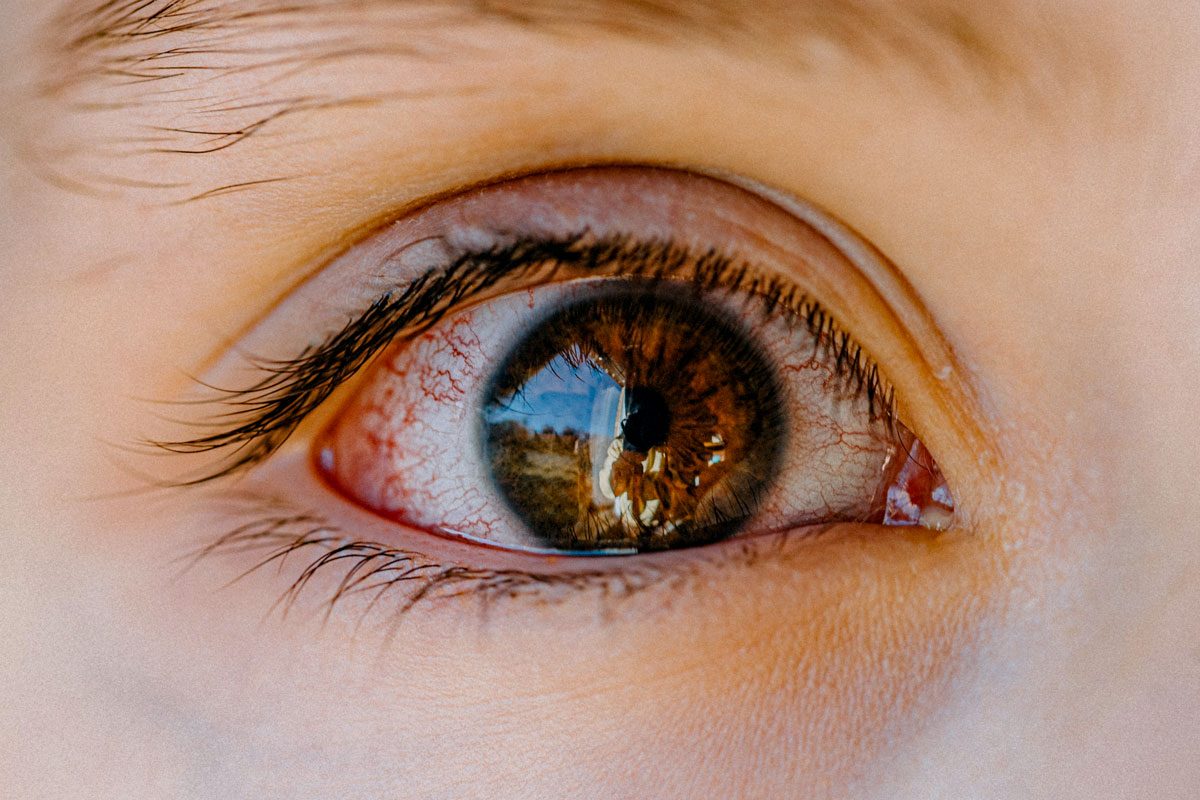
What Is Commonly Misdiagnosed as Pink Eye? An Expert Eye Doctor Shares the List

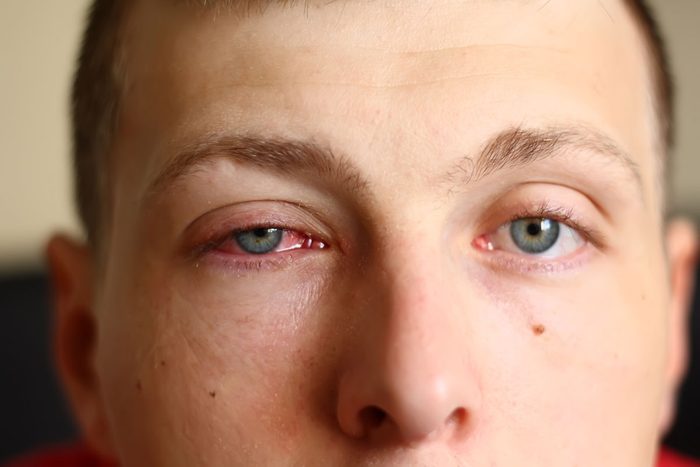
What is pink eye?
“Pink eye is a general term for inflammation of the white part of the eye,” says Dr. Stokkermans. The white of the eye, known medically as the sclera, is made up of three layers: the sclera itself, the episclera, and the conjunctiva. When any of these layers become inflamed, the blood vessels in them expand, giving the eye its characteristic pink or red hue.
Since most cases of pink eye are caused by viruses, people often associate the condition with viral infections. “The most common cause is adenovirus, which also causes the common cold,” he adds. (Viruses aren’t the only culprits. Bacteria can cause pink eye as well, and we’ll cover that shortly.)
Symptoms
Viral pink eye (viral conjunctivitis) symptoms can include:
- Gritty or sandy feeling in the eye
- Increased tear production
- Redness in one or both eyes
- Itchiness in one or both eyes
- Watery discharge rather than thick mucus
- Light sensitivity (photophobia)
- May be accompanied by cold-like symptoms such as a runny nose, sore throat, or cough
Treatment
Viral pink eye is typically managed with at-home remedies, such as applying cold compresses to ease discomfort, using artificial tears to relieve irritation, and allowing the infection to run its natural course. According to Dr. Stokkermans, the condition should clear up within two weeks. If it lasts longer, it’s important to see your eye doctor.

How contagious is pink eye?
“A viral pink eye is very contagious,” says Dr. Stokkermans, especially when it’s caused by adenovirus. This type of pink eye is transmitted through direct personal contact, droplets from a cough or sneeze, or by touching contaminated surfaces.
“Certain types of adenovirus spread so quickly that they cause epidemic outbreaks of pink eye,” he explains. This severe form is known as epidemic keratoconjunctivitis (EKC), and it can affect entire communities in a short period. Besides adenovirus, other viruses like herpes simplex, varicella-zoster, molluscum contagiosum, mumps, measles, and even mononucleosis can also cause pink eye.
How to prevent the spread of pink eye
If you or someone you know has pink eye, taking the right precautions can help stop it from spreading:
- Wash your hands frequently: Scrub with soap and water for at least 20 seconds, especially after touching shared surfaces like doorknobs or counters.
- Use hand sanitizer: If soap and water aren’t available, opt for a sanitizer that contains at least 60% alcohol.
- Keep your hands away from your eyes: Avoid touching or rubbing your eyes, especially if your hands aren’t clean.
- Don’t share personal items: Avoid sharing things like towels, pillows, washcloths, hats, eye drops, makeup, glasses, contact lenses, or lens cases.
- Maintain distance: Limit close contact with others to reduce the chance of spreading the virus.
- Disinfect common surfaces: Regularly clean high-touch areas such as light switches, doorknobs, and countertops.
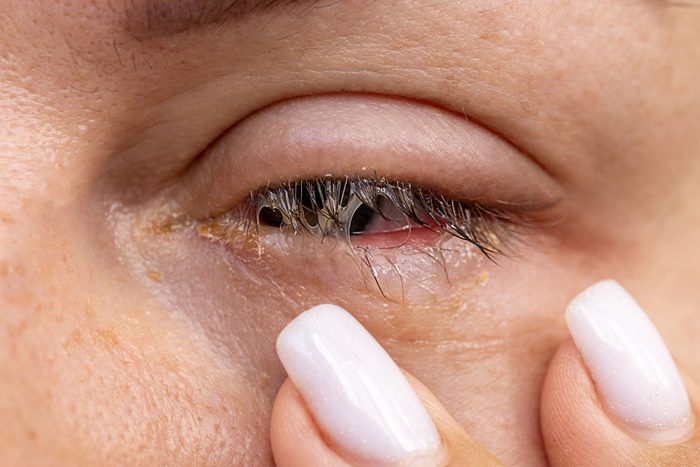
What is commonly misdiagnosed as pink eye?
Red, irritated eyes aren’t always the result of a viral infection, and confusing other conditions with pink eye can lead to ineffective treatment. Although viral conjunctivitis is often the first culprit, several other issues can trigger similar symptoms. Here are some of the most common conditions that are frequently mistaken for viral pink eye:
1. Bacterial conjunctivitis
Bacterial conjunctivitis is a common offender that’s easily confused with viral pink eye, but there are key differences to watch for. “Bacteria are the second most common type of infection of the conjunctiva,” explains Dr. Stokkermans. The usual bacterial suspects include Staphylococcus aureus, Streptococcus pneumoniae, and Haemophilus influenzae.
One of the telltale signs that you’re dealing with bacterial conjunctivitis is the type of discharge. Unlike viral pink eye, which typically causes a watery discharge, bacterial conjunctivitis leads to a thick, sticky secretion that often causes the eyelids to stick together—especially when you wake up in the morning. Another clue? “It is not as contagious as viral pink eye, and while viral pink eye almost always affects both eyes, bacterial conjunctivitis is more likely to affect only one eye,” notes Dr. Stokkermans.
Treatment:
Bacterial conjunctivitis is usually treated with antibiotic eye drops or ointments, which help clear the infection quickly and reduce the risk of spreading it to others.

2. Seasonal allergies
“Seasonal or year-round (perennial) allergies are the most common cause of non-infectious pink eye,” says Dr. Stokkermans. When allergens like pollen, pet dander, mold spores, or dust mites enter the environment, they can trigger a reaction known as allergic conjunctivitis. This often leads to:
- Itchy, irritated eyes
- Swelling of the conjunctiva, giving the eyes a glazed or watery appearance
Treatment:
According to Dr. Stokkermans, allergic conjunctivitis can be managed with over-the-counter allergy eye drops, cool compresses, and—most importantly—by identifying and avoiding the offending allergen. Consulting an allergist for allergy testing can help pinpoint the exact trigger. However, be cautious with oral allergy medications as they “are often counterproductive,” he warns. These medications tend to dry out the eyes, which worsens symptoms. Since natural tears help flush allergens from the eyes, keeping them moist is key to finding relief.

3. Dry eye syndrome
Another condition often mistaken for pink eye is dry eye syndrome, a common issue affecting at least one in ten Americans. While it might seem minor, its symptoms can be uncomfortable and persistent:
- A gritty or sandy sensation in the eyes
- Fluctuating vision throughout the day
- Excessive tearing (known as reflex tearing or epiphora), especially when exposed to dry air
“The condition gets worse after heavy computer use or reading, and the eyes will temporarily feel better after installation of artificial tears,” Dr. Stokkermans explains. Unlike viral pink eye, which should clear up in one to two weeks, dry eye syndrome can linger and often worsens over time if left untreated.
Treatment:
Managing dry eye can be complex. Treatments may include immunosuppressant eye drops like cyclosporine and lifitegrast, a nasal spray (varenicline), blocking the tear drainage system with punctal plugs, and regularly using preservative-free artificial tears.
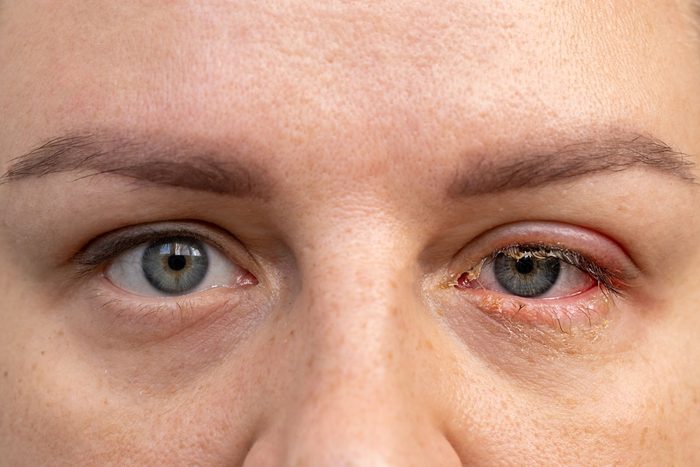
4. Blepharitis and blepharoconjunctivitis
If your eyelids are persistently itchy and your eyes feel dry or look red, you might be experiencing blepharitis or blepharoconjunctivitis—two common inflammatory conditions affecting the eyelids and the surface of the eyes. Dr. Stokkermans notes, “Unlike viral pink eye, it is a chronic eye problem that can, in turn, cause dry eye syndrome, bacterial conjunctivitis, misdirected eyelashes (trichiasis), styes (chalazia), and calcium deposits on the inside of the eyelids (conjunctival concretions).”
These conditions are marked by:
- Redness
- Irritation and itchiness
- Crusty buildup along the edges of the eyelids.
Treatment:
Managing these conditions often starts with good eyelid hygiene. Warm compresses can help loosen debris, while gentle cleansing of the eyelash base with baby shampoo, hypochlorous acid, or tea tree oil products can reduce irritation. If an overgrowth of eyelid mites (Demodex) is contributing to the problem, your doctor may prescribe lotilaner (XDEMVY) eyedrops to clear up the infestation and ease symptoms.
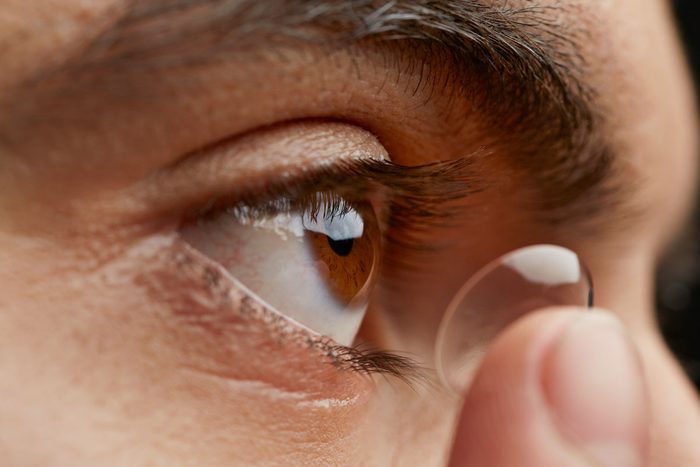
5. Contact lens habits
Sometimes, what seems like pink eye could actually be irritation caused by how you wear your contact lenses. Dr. Stokkermans says, “Wearing contact lenses too long, sleeping in contact lenses, or having an allergic reaction to deposits on the lenses and preservatives in the contact lens cleaning solutions can all cause irritated and red eyes.” Left unchecked, this kind of irritation from contact lenses can lead to keratitis, a more serious condition where the cornea becomes inflamed, potentially causing pain, blurry vision, and even long-term damage if not treated promptly.
Treatment:
Switching to daily disposable lenses that allow more oxygen to reach your eyes can make a big difference. In some cases, steroid or allergy eye drops may also be recommended to reduce inflammation and discomfort.

6. Irritant conjunctivitis
What may seem like pink eye could actually be a reaction to irritants in the environment, notes Dr. Stokkermans. Common culprits include dust, chemicals, or smoke, which can lead to a condition known as irritant conjunctivitis. “In some cases, intense UV light reflected off snow or a water surface can cause red eyes,” he adds. This type of eye irritation typically develops shortly after exposure to the offending substance or light and is often accompanied by a gritty sensation and excessive tearing.
Treatment:
For mild cases, over-the-counter artificial tears can help soothe the eyes. In more severe instances, your doctor may recommend non-steroidal anti-inflammatory or steroid eye drops.
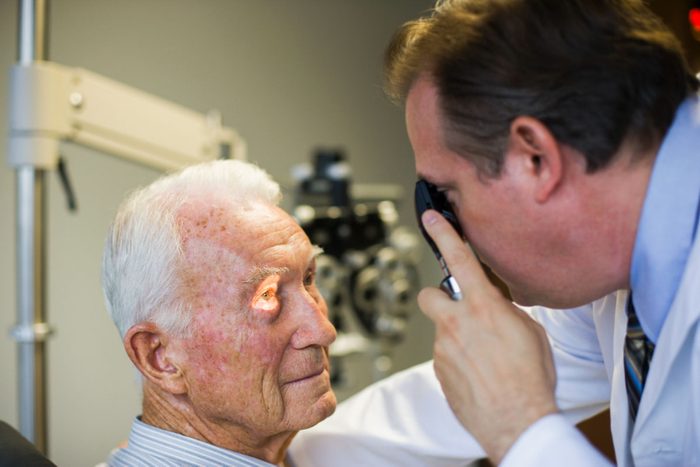
When to see a doctor
Recognizing what might be mistaken for pink eye is just as important as knowing when to seek medical attention. Certain warning signs should prompt an immediate visit to urgent care or the emergency room:
- Pain: “Pink eye may cause discomfort and a gritty feeling of the eye but should never cause pain,” says Dr. Stokkermans. Eye conditions such as acute angle-closure glaucoma, scleritis, and uveitis are serious and potentially blinding. If left untreated, they can cause permanent vision damage.
- Sensitivity to light: “This can be a sign of an inflammation of the inside part of the front of the eye called iritis or anterior uveitis.” This condition requires treatment with steroid eye drops and medication to dilate the pupil (a cycloplegic agent).
- Changes in vision: If you experience blurred vision, halos, glare, or any temporary or permanent loss of eyesight, don’t ignore it—even if your vision returns to normal.
- Changes in the appearance of the eye: “If the colored part of the eye appears to have a white or brown spot, this could be a sign of corneal inflammation (such as an ulcer or infiltrate) or a foreign body (like a rust particle).” If untreated, these conditions can lead to permanent damage.
Even if you don’t experience these specific symptoms, Dr. Stokkermans emphasizes that viral pink eye typically clears up within two weeks. If your symptoms last longer, it could indicate a more significant issue, and you should consult an eye care professional.
Above all, make annual comprehensive eye exams a priority. These checkups do more than just ensure good vision—they can catch potential problems early, helping to protect your eyes and overall health in the long run.
For daily wellness updates, subscribe to The Healthy by Reader’s Digest newsletter and follow The Healthy on Facebook and Instagram. Keep reading:



















